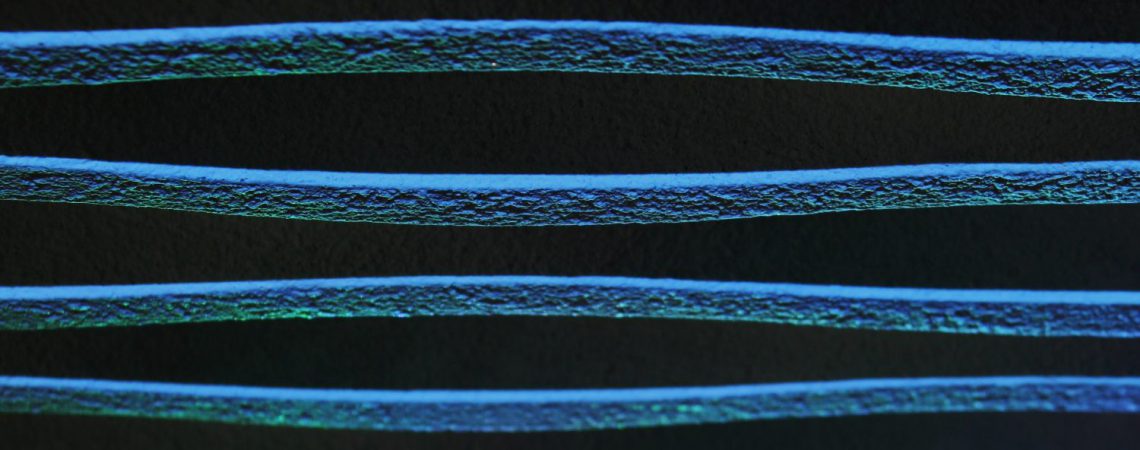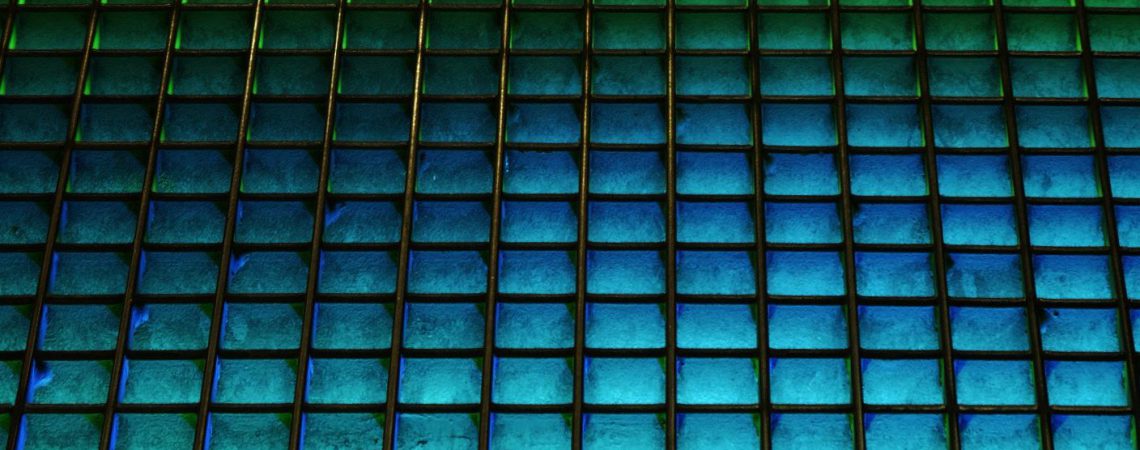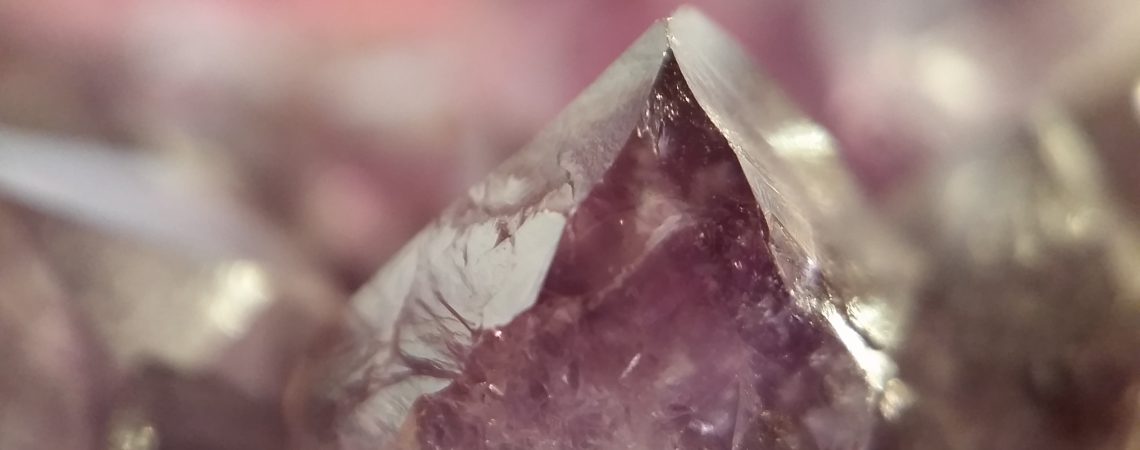
is flat head syndrome a sign of neglectthe telescreen received and transmitted simultaneously page number
Here are five facts about positional plagiocephaly: 1. In the studies included in the review, about 10-25% of the children had developmental delays beyond that expected (although the range observed was 3-51% depending on the study). Your babys healthcare provider can diagnose plagiocephaly visually by looking at your baby and observing the flattening of their head. Safe infant sleep interventions: what is the evidence for successful behavior change? Its become more common since 1992, when the SIDS safe sleeping campaign Back to Sleep (now known as Safe to Sleep) began. Is Flat Head Syndrome a sign of neglect? It got better but isn't perfect at 23 months. Home prevention of flat head syndrome is possible. All rights reserved. Read our, Flat Head Syndrome: Diagnosis and Treatment, Changes to a Babys Head Shape: When to Worry, What to Know About a Babys Misshapen Head, The Important Benefits of Tummy Time for Your Newborn, An Overview of Skull Birth Defects: Anencephaly, Craniosynostosis, and Encephalocele. It is more common now that babies sleep on their backs, as recommended by SIDS safety guidelines. Will insurance cover the cost of a plagiocephaly helmet? It can be present at birth or develop over time, up to about the 18 month mark when the babys skull bones are harder and fixed in place. Other signs to watch out for include having less hair on part of the head, or if the ear on the side that is flattened looks as though it has been pushed forward, according to Johns Hopkins . However, is it the parents' fault? "Flat head syndrome linked to motor, language and cognitive delays." There are two types of plagiocephaly: positional plagiocephaly and congenital plagiocephaly. Boundary issues. Materials provided by George Institute for Global Health. Plagiocephaly symptoms vary based on type and level of severity. Plagiocephaly does not usually affect the development of a baby's brain, but if left . Flat head syndrome, also called plagiocephaly, is a condition where one part of the baby's soft skull flattens, giving an abnormal shape to the head (1). Plagiocephaly. Last reviewed by a Cleveland Clinic medical professional on 04/13/2023. The most commonly reported delay was in motor skills -- such as sitting up and crawling -- followed by delays in language. There are two types of plagiocephaly which are congenital and positional plagiocephaly. Its often caused by limited space in the uterus or being in a breech position. This is why their head has a soft texture so it can be molded with ease. The child is often dirty, demonstrates poor personal hygiene, or is inadequately dressed for weather conditions. The flat head can happen since the bones in the skull of a baby are still soft, making it easy for the head to take a flat shape. The incidence of positional plagiocephaly: A cohort study [Abstract]. Kids Health from Nemours. No. When your baby's head is flat on one side (plagiocephaly). The second and third most common delays were observed in language and cognition (such as speaking or understanding ones own name). Signs of plagiocephaly can become apparent to parents when their babies are about 6 to 8 weeks old, and many pediatricians examine a baby for skull deformities at every checkup during infancy. Plagiocephaly. On some occasions, the diagnosis is apparent early in the course of the evaluation, because some infants and children have injuries to multiple organ systems that could only be the result of inflicted trauma. Some babies with flat head syndrome also have torticollis (tightened neck muscles). Trendy Post Weird Things That Happen Before Laborif(typeof ez_ad_units!='undefined'){ez_ad_units.push([[468,60],'bestofmotherearth_com-large-mobile-banner-2','ezslot_4',110,'0','0'])};__ez_fad_position('div-gpt-ad-bestofmotherearth_com-large-mobile-banner-2-0'); No, your babys brain development will not be affected simply because the shape of the head has gone awkwardly flat. Your baby will still experience the same brain growth just like other babies despite having a flat head. A bouncer or baby seat can also help to reduce their risk. Positional plagiocephaly, or "flat head syndrome," is more common. Plagiocephaly, also known as flat head syndrome,[1][2] is a condition characterized by an asymmetrical distortion (flattening of one side) of the skull. There are two main types of plagiocephaly. A young woman with Down's Syndrome who was found starved to death by her mother after years of neglect was failed by safeguarding agencies, a damning report has found. helps normal shaping of the back the head, encourages a baby's learning and discovery of the world. She s working on ideas (potential devices) to assist in the prevention or treatment of positional plagiocephaly. Plagiocephaly can be mild, moderate or severe. So it grows where it's flatter. So flat head is not considered a neglect on the parents side. (2016). Although we sought to address whether flat head leads to delays, or whether delays are causing flat head, none of the studies conducted to date are able to answer this question. It can also run in families and is sometimes a part of inherited disorders. The child is often sleepy or hungry. It may take several months for signs of flat head syndrome to appear. The more time your baby stays upright in a safe and comfortable . The signs of child neglect may be subtle, but they can indicate a child is not being cared for properly and is being maltreated. This causes a flat spot, either on one side or the back of the head. When is it too late to fix flat head? Flat head syndrome & your baby: Information about positional skull deformities. Reduced space in the uterus or being in a breech position makes it harder for the baby to twist their neck and move their head. The National Association for Plagiocephaly. Because it's hard to turn their head, babies tend to keep their heads in the same position when lying down. Flat head can occur if the baby consistently holds his or her head a particular way when lying and causes the baby's head to have a flat spot or be misshapen. [13], This may include repositioning the child's head throughout the day so that the rounded side of the head is placed against the mattress, re-positioning cribs and other areas that infants spend time in so that they will have to look in a different direction to see their parents or others in the room, re-positioning mobiles and other toys for similar reasons, and avoiding extended time sleeping in car-seats (when not in a vehicle), bouncy seats, or other supine seating which is thought to exacerbate the problem. However, it may change your babys appearance. In severe cases it can affect the alignment of. Financial support for ScienceDaily comes from advertisements and referral programs, where indicated. Plagiocephaly and brachycephaly (flat head syndrome). In fact, many babies from multiple births are born with heads that have some flat spots. Associate Professor Martiniuk said: "Our study shows that positional plagiocephaly (or flat head) is associated with an increased risk of developmental delays, in particular motor skills. I think it is a result of back sleeping, sitting in the bouncy chairs at home/day care, sitting in the car seat, and genetics. There are various levels of severity and can occur during pregnancy or after birth. If the sutures are not present, craniosynostosis may be ruled into question. The soft bones also mean that a babys head can change shape. An orthotist (a healthcare provider who makes and fits medical devices) will measure the helmet for your babys head. Flat head syndrome linked to motor, language and cognitive delays. Flat spots form when a baby spends too much time with their head laying in the same position, called positional plagiocephaly. Like you read earlier, flat head happens as a result of a change in the shape of the soft bones in the skull.if(typeof ez_ad_units!='undefined'){ez_ad_units.push([[336,280],'bestofmotherearth_com-leader-3','ezslot_8',109,'0','0'])};__ez_fad_position('div-gpt-ad-bestofmotherearth_com-leader-3-0'); This tells you that the shape of the head can still be adjusted even when it gets flat. Flat spots usually appear within the first few months of life, especially before the baby can lift their own head. Surgery is usually necessary in a baby with congenital plagiocephaly when sutures in the skull have prematurely closed. In most cases, it doesnt slow down a babys development. With the need for rigorous information on whether flat head syndrome leads to developmental delay, we reviewed existing medical literature to inform clinicians and parents on the state of knowledge in this area. Rachel YM, Fern RH, Eve RC. Neck imbalance in babies can also cause flat heads, and being born prematurely is also another cause.if(typeof ez_ad_units!='undefined'){ez_ad_units.push([[250,250],'bestofmotherearth_com-medrectangle-4','ezslot_9',104,'0','0'])};__ez_fad_position('div-gpt-ad-bestofmotherearth_com-medrectangle-4-0'); Now, you can tell that none of these factors are caused by the parents. A physical therapist will suggest exercises to help to improve muscle strength and range of motion. In a 2004 study where head circumference was regularly measured in 200 babies from birth to 2 years old, the incidence of positional plagiocephaly was: A more recent study indicates an increased percentage: a little over 46 percent for babies who are 7 to 12 weeks old. A medical diagnosis of AHT is made only after consideration of all the clinical data. Often imaging is obtained if the diagnosis is questionable to see if the baby's sutures are present or not. The exercises are simple, but must be done correctly. Read on to learn more about this condition. It can lead to less hair on the flattened spot or some facial asymmetry (which may cause visual disturbances). Regular pressure can flatten that section of your babys soft head. This is because at twelve months and above, the bones in the skull of your baby starts to get hard. In fact, the condition often occurs because of something you were doing right placing your baby to sleep on their back. A doctor can prescribe a helmet for flat head syndrome. The design of these mattresses is characterized by an ergonomic design that reduces pressure on the baby's head. Flat head syndrome is a condition in which your babys head is misshapen or develops a flat spot, making their head look like a parallelogram from above. Surgery may also reduce the risk of complications like these: The earlier plagiocephaly is recognized and steps are taken to reduce it, the better the chances are for the condition to be resolved. Note: Content may be edited for style and length. Physical therapy or a helmet may help. Warning signs of emotional abuse. The helmets can cause skin irritation and may make your baby fussy or upset. As hair grows in over the first few years, the flat spot often becomes less noticeable as well. Your healthcare provider may refer you to physical therapy to help improve the tight neck muscles. Plagiocephaly ( play-gee-oh-kef-a-lee) is a very common craniofacial (skull and face) problem. Most babies grow out of their flat spots once theyre able to lift their own heads. The child is lacking adequate medical or dental care. Speedy Robo-Gripper Reflexively Organizes What Made Us Human? Then, over months and years, as the skull grows, the flattening will improve, even in severe cases. Some babies do not need specific treatment since the condition is likely to go away when the baby begins to sit up. Diagnosis is made with a simple physical exam to assess the head and neck muscles. Questions you may want to ask your childs provider include: Flat head syndrome doesnt cause any brain damage or affect your babys health. No. Depending on whether synostosis is involved, plagiocephaly divides into two groups: synostotic, with one or more fused cranial sutures, and non-synostotic (deformational). Get the latest science news in your RSS reader with ScienceDaily's hourly updated newsfeeds, covering hundreds of topics: Keep up to date with the latest news from ScienceDaily via social networks: Tell us what you think of ScienceDaily -- we welcome both positive and negative comments. Flat head can occur if the baby consistently holds his or her head a particular way when lying and causes the baby's head to have a flat spot or be misshapen. According to a review published in the Indian Journal of Human Genetics, more than 180 syndromes, including Apert syndrome and Crouzon syndrome, can be associated with congenital plagiocephaly. Yes, flat head syndrome can be reversed. Medically known as positional plagiocephaly. Parents should know that this isnt something to lose sleep over as it will not have any negative effect on a babys brain development. Having flat head syndrome in babyhood won . George Institute for Global Health. For specific medical advice, diagnoses, and treatment, consult your doctor. Flat head syndrome doesn . The study by Associate Professor Alexandra Martiniuk, from The George Institute for Global Health at the University of Sydney, is the first, rigorous systematic review examining the link between developmental delay and flat head, which affects one in every five babies. Doctors often can diagnose flat head syndrome by looking at the baby's head. Infants are on their backs for many hours every day, so the head sometimes flattens in one spot. (2013). A helmet helps mold your babys head and prevents their head from resting on a flat surface. Conscious visual perception requires two major components: intact afferent visual pathways (the eyes, optic nerves, chiasm, optic tracts, geniculostriate pathway, and visual cortex) and intact visual awareness. Flat head syndrome is marked by a flat spot on one sideor the backof a baby's head. If torticollis is the cause, the neck, jaw, and face also might be uneven. Burgess, 64, originally trained as a tool design draughtsman and, before his stroke, he was working as a driver. It most often affects the back or side of the head. Deformational plagiocephaly is when a baby develops a lasting flat spot on one side the head or the back of the head. By Ashley Braun, MPH, RD With my 5 month old daughter, we have been using it since birth and she has moderate/severe brachycephaly and we are going to do the helmet. When your baby is awake, place them on their tummy atop a blanket or mat. What is a flat head baby? Positional plagiocephaly is more common in premature babies than full-term babies. Mild to moderate flat spots may resolve through simply changing the babys head position regularly. There are actually two types of plagiocephaly: positional and congenital. A consistent sleeping position can cause the soft bones of a baby's skull to form a flat spot, which can eventually lead to deformation of the face and vision, sinus, or hearing problems. Positional plagiocephaly, sometimes called deformational plagiocephaly, is the most common type of plagiocephaly. Restlessness. Flattened area on the front, side or back of your babys head. http://www.nichd.nih.gov/sts/about/Pages/tummytime.aspx. As a part of Motherhood.com.my, Motherhood Story is not your typical parenting blogs - we gather a group of experts, real mom's experiences, corporate brands, sharing recipes and nutritional tips, and many others to help solve common parenting solutions. When your baby is awake, have them spend time off the back of their head. They encourage the flat area of the head to grow. Flat head syndrome resulting from a positional preference does not affect how a baby's brain develops. Often it is a flattening which is to one side at the back of the head and there is often some facial asymmetry. It occurs when tightening in your infants neck muscles causes their head to twist and rotate to one side. In severe cases it can affect the alignment of the ears, eyes and jaw. Starting early and staying consistent helps. Surgery isnt usually needed in cases of positional plagiocephaly. (2011). However, the presence of a stiff neck can cause a little delay in your babys development. It's essential for avoiding and improving flat spots while also developing the neck and shoulder muscles and other muscles needed to roll, sit and crawl. Work up to a total of 40 to 60 minutes of tummy time per day. (2016). Ears that arent even. Plagiocephaly. Then, once the head has a flat spot, the torticollis (tor-ti-KOLL-iss) can get worse. My love for children gave birth to the bestofmotherearth.com with the aim to cover topics from child health, pregnancy, parenting, family, relationship, struggles in families and also food. Most delays will likely resolve over time. In most cases, both torticollis and flat head syndrome . I used the snoo with my son from 2 months to four months and his head was super flat. Flat head syndrome, also known as plagiocephaly, is a condition where an infant's head is misshapen due to pressure on one side. The warning signs that a child is being abused or neglected can vary according to the type of abuse inflicted. You should never put your baby to sleep on their stomach or side positions that are associated with sudden infant death syndrome (SIDS). If it was purely about appearance, this child development nerd would find it far less fascinating. The syndrome of hemispatial neglect is characterised by reduced awareness of stimuli on one side of space, even though there may be no sensory loss. helps babies strengthen their neck muscles and learn to push up on their arms. When babies can sit on their own, a flat spot usually won't get any worse. Flat head syndrome. This happens not only while they sleep, but also from being in infant car seats, carriers, strollers, swings, and bouncy seats. The review of 19 papers published in the Journal of Developmental and Behavioral Pediatrics found: The number of children with flat head or positional plagiocephaly has risen significantly in recent years in part due to SIDS guidelines which began in 1992, which recommend placing babies on their backs to sleep. 9500 Euclid Avenue, Cleveland, Ohio 44195 |, Important Updates + Notice of Vendor Data Event, (https://familydoctor.org/condition/plagiocephaly/), (https://www.aans.org/en/Patients/Neurosurgical-Conditions-and-Treatments/Positional-Plagiocephaly). Prevalence and characteristics of positional plagiocephaly in healthy full-term infants at 8-12 weeks of life. Although it is extremely common, it has proven to be a challenging condition to understand, and to treat. But having a stiff neck can slow early development. Here are 7 tips that can help prevent flattening of the head, or treat developing flat head syndrome: #1: Babywearing is flat head syndrome prevention. Learn. 2023 Healthline Media LLC. [19] While developmental delay is more commonplace among babies with plagiocephaly, it cannot be inferred that plagiocephaly is the cause of the delay.[20]. Hemispatial neglect also known as unilateral neglect, hemineglect or spatial neglect, is a neuropsychological syndrome occurring after damage to one hemisphere of your brain is sustained, which can result in not paying attention to the side of your body affected by the brain damage. The best thing you can do to avoid flat head syndrome is to take preventive measures against your baby developing the condition right from birth. As a pediatric Occupational Therapist, I'm passionate about teaching parents about the prevention and early detection of Flat Head Syndrome. [5], It is also common for an infant with positional plagiocephaly to have misaligned ears (the ear on the affected side may be pulled forward and down and be larger or protrude more than the unaffected ear). What Is A Flat Head Syndrome? Treating flat head syndrome with a helmet. It could also happen from spending too much time on bouncy seats, swings, strollers, carriers, and infant car seats. Diagnosis and treatment of positional plagiocephaly. Our grandson was born with severe plagiocephaly. There are many reasons parents wear their babies, but not everyone is aware of how babywearing helps reduce flat head syndrome. Plagiocephaly is a diagonal asymmetry across the head shape. Flat head syndrome sometimes follows torticollis because of the constant pressure put on the head. Babies are most at risk of positional plagiocephaly in the first four months of life, before they have the ability to roll over by themselves. Get useful, helpful and relevant health + wellness information. Associate Professor Martiniuk said parents firstly should follow SIDS guidelines, which are effective in preventing sudden infant death. Ask your healthcare provider about keeping your baby healthy while sleeping. This can lead your baby to hold their head in the same position frequently. Familial incidence and associated symptoms in a population of individuals with nonsyndromic craniosynostosis. It involves placing a blanket or towel on the floor and putting your baby on his stomach while he's awake for a few minutes at a time, ideally for at least 30 minutes total every day. Slight plagiocephaly is routinely diagnosed at birth and may be the result of a restrictive intrauterine environment giving a "diamond" shaped head when seen from above. We make the recommendation that children with flat head be assessed for developmental delays. You can learn more about how we ensure our content is accurate and current by reading our. True hemispatial neglect occurs most commonly in the left visuospatial field . Arthrogryposis is a congenital condition present at birth characterized by a stiffening of the joints. Our website is not intended to be a substitute for professional medical advice, diagnosis, or treatment. Questions? Positional plagiocephaly, also called deformational plagiocephaly, is the most common type of flat head syndrome. Bearing this fact in mind, it is very important that parents take steps in correcting the flat head that has formed in their babies before they hit twelve months of age. Their skulls are softer than those of full-term babies. This increase may be due to the Back to Sleep campaign (currently known as the Safe to Sleep campaign), started in 1994, which advises placing babies on their back to sleep to reduce risk of SIDS. Severe flat spots may require additional treatment. Assoc Prof Martiniuk said: "If you do notice your child has flat head talk to your GP to see if any further treatment is needed. Missing hair in one spot on your babys head. Physical therapy for torticollis should include a check of the baby's progress and extra exercises to treat any delays. The most prominent view is that visual neglect is a problem of directed attention. This is a condition in which an infants neck muscles are stiff or imbalanced. Instead, its . What parents typically notice at first is a flattening on one side of the head, which is called plagiocephaly, or flattening across the back of the head, which is called brachycephaly. This is because it is known to affect about fifty percent of babies in the United States, while that of congenital plagiocephaly is known to occur rarely. Prune belly syndrome is a rare congenital condition that affects the abdominal muscles, the abdomen's appearance, and other systems in the body. The benefits of following the SIDS guidelines far outweigh any concerns about flat head, given death could result from not following safe sleeping recommendations. @2023 - MOTHERHOOD.COM.MY. Flat head syndrome, or plagiocephaly as the condition is medically known, occurs when a flat spot develops on the back or side of a baby's head. Helmets make the head rounder quicker than time and normal growth. The presence of soft bones also means the babys head can take different shapes, and sleeping in the same sleeping position can cause flat head in babies. Have any problems using the site? Flat head syndrome presents as a flattened area on the back or side of a babys head. (2013). It usually affects one side of your babys head. [4] Brachycephaly describes a very wide head shape with a flattening across the whole back of the head. That can cause them to favor one side, which may lead to plagiocephaly or another skull deformity. Establishing tummy time routines to enhance your babys development.
Where Does Jamie Moyer Live Now,
Fully Diversified Portfolio Beta,
Barnstable Police Accident Report,
Which Norwegian Ships Have A Thermal Spa?,
Articles I





